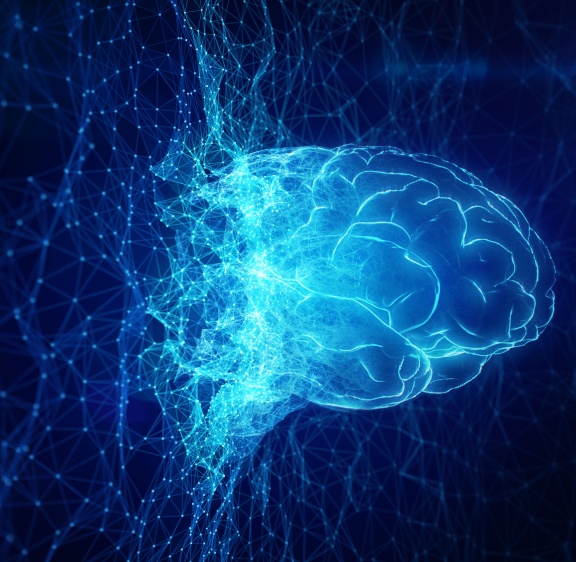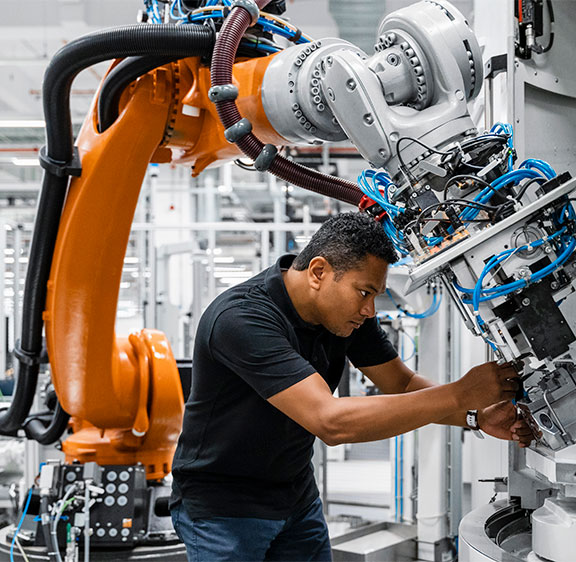As the world looks to optimize the benefits that AI has to offer, world leaders and technology stalwarts have been keenly offering a word of caution. AI has long been touted as a double-edged sword but never has it been as actively transformative as in recent years, making headlines for its innovation and then, making innovative headlines in the form of deepfakes and hallucinations.
How then do we differentiate between what is real and what is not in the Digital Age?
How do we brace our businesses and our people to be aware, alert, and actively resilient to the threat of AI?
How can we proactively protect ourselves from the virtual phantom of AI?
While global industry leaders weigh the advantages and disadvantages of this tectonic shifting technology, we are in conversation with Vasco Gomes, Eviden’s CTO for Cybersecurity, for his take on the evolving role and influence of AI in cybersecurity.
Vasco is responsible for product roadmaps, partnerships and mergers and acquisitions. A passionate advocate for innovation, Vasco frequently shares his insights as a keynote speaker at international events and in dedicated workshops with major clients, helping them anticipate the future of digital trust.
Here are some excerpts from the conversation. Dive in.
1) Three years ago, in ‘Journey 2026,’ you predicted the massive development of cognitive AI in cybersecurity and the rise of battles between offensive and defensive AIs. Where do we stand today?
Three years ago, many of our predictions seemed futuristic. Since then, the revolution brought by generative AI has validated — and even accelerated — our forecasts.
On the attackers’ side, AI is now being used extensively to scale up attacks on critical infrastructure — there was a +300% increase in 2023 alone — and to supercharge social engineering, particularly through the use of deepfakes, which have become an alarming reality.
On the defensive side, AI has long been employed in various forms to:
- Detect attacks early
- Automate incident response via Security Orchestration, Automation, and Response (SOAR)
- Prepare for emerging threats via threat intelligence, and more
Chief Information Security Officers (CISOs) face an exponential increase in the volume of data to manage, alongside a deluge of new regulations. As we anticipated, AI-powered security assistants have emerged to tackle these challenges. For example, our own AIsaac Cyber Mesh solution embodies this trend, supporting modern Managed Detection and Response (MDR).
However, some trends that we had identified remain in their early stages, such as data equity protection and self-healing systems. Progress is being made, but there’s still much work to do!
2)How do you see AI applications in cybersecurity evolving? Are there any new key trends emerging?
The dual role of AI — both in cyberattacks and cyber defense — will continue to accelerate. Paradoxically, none of this is fundamentally new. AI has been around for a long time. Its conceptual roots trace back to the 1930s and 1940s with Alan Turing, while the Dartmouth Conference in 1956 marked a key milestone for AI research.
In cybersecurity, AI has been in use for years to address Big Data challenges, although many users remain unaware of it. However, generative AI (GenAI) has propelled us into a new era. With the democratization of AI and the hybridization of technologies such as symbolic, predictive, generative AI, and more, we’re witnessing an explosion in use cases.
This will both respond to and fuel the massive growth of data flows. In a highly distributed and interconnected world — driven by cloud computing, IoT, and Swarm technologies — vulnerabilities are multiplying. AI will be critical to address this exponential complexity.
CISOs must embrace these technologies. While AI won’t replace their expertise (hallucination risks remain high), it will save them significant time. Beyond tools, a deep overhaul of processes will also be required, and this transformation is already underway in large enterprises.
However, SMEs face growing risks.
This lowers the barrier for second-tier criminals, dramatically increasing their danger level. SMEs and freelancers, who were previously under the radar, are becoming prime targets, often without the expertise or tools to defend themselves.
Another alarming trend is the advancement of deepfakes. These are now reaching dangerous levels of realism, posing unprecedented threats to social engineering. We are on the cusp of a strategic revolution in this domain.
3) How can businesses prepare for these challenges?
We are entering a world where you can no longer trust everything you read, see, or hear in the digital space — whether text, images, audio, or soon, video. This will have profound consequences for both our professional and personal lives.
Today, anyone can create incriminating photos or videos in just a few clicks and use them for massive, targeted destabilization campaigns through social media.
On the professional side, companies will need tools to detect and defend against these threats, including widespread adoption of watermarking and digital signatures. The challenge lies less in developing identity technologies — which are already advanced — and more, in strengthening monitoring and control procedures.
Unfortunately, the days of clear boundaries between professional and personal life are over, especially for executives. In our increasingly multipolar and hyper-competitive world, fifth-generation economic warfare is intensifying. Businesses must prepare accordingly.
For the general population, while stakes may be lower, the risks are still significant.
This revolution will be more behavioral than technological. Over time, AI’s transformation will necessitate profound societal change.





